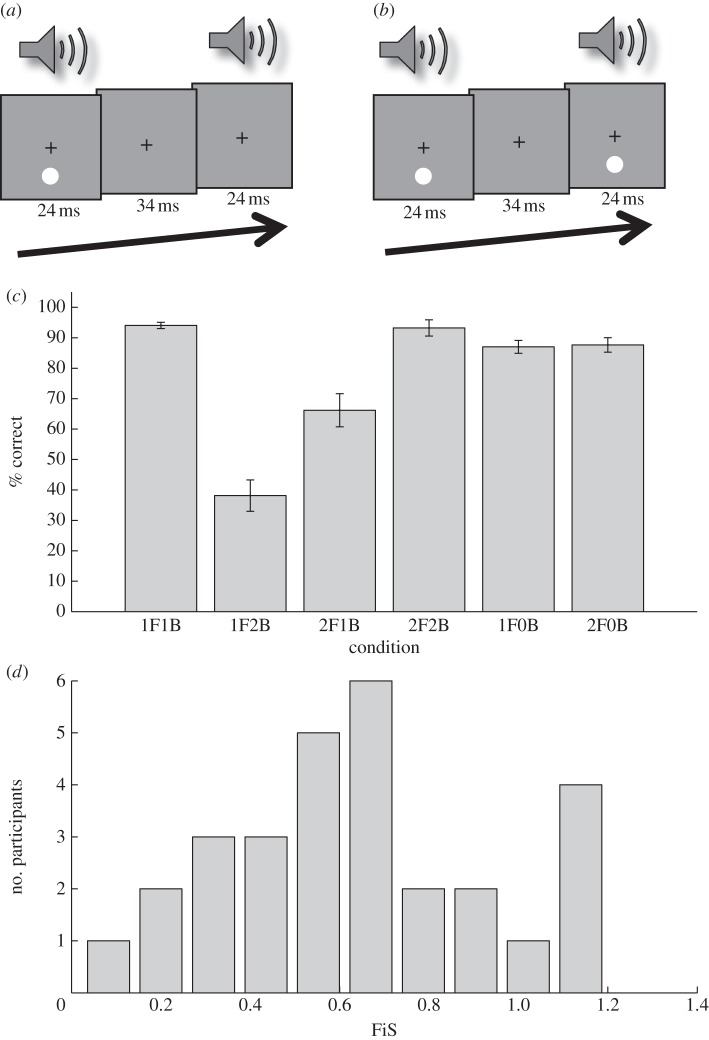Figure 1.
(a,b) Stimulus sequences and (c,d) behavioural results. The visual stimulus consisted of a visual disk (with a radius of 1° visual angle) that flashed once or twice at 5° eccentricity below or above the fixation cross, which was placed at the middle of the screen. The flash or flashes were combined with zero, one, or two beeps (3.5 KHz at 65 dBA). (a) The critical trial type for the sound-induced flash illusion: one visual flash is accompanied by two beeps (1F2B). (b) A trial in which two flashes were accompanied by two beeps (2F2B). (c) Behavioural results by trial type. In each trial, participants (n = 29) indicated whether they saw one or two flashes. Bars represent the percentage of correct answers by trial type, averaged across participants. xFxB refers to number of flashes and beeps, respectively (from left to right: trials with one flash and one beep; one flash and two beeps; two flashes and one beep; two flashes and two beeps; one flash only; two flashes only). Error bars represent the s.e. of the mean. Note that the second bar represents the critical trial type (one flash, two beeps). The low overall proportion of correct answers for this trial type (38%) indicates that participants perceived the illusory second flash in the remaining trials of this condition (cf. table 2). (d) The distribution of FiS across the sample.

